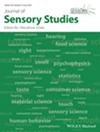Different approaches for handling consumer segments in L-shape data are compared in a study conducted in Norway. Consumers evaluated eight different yoghurt samples with profiles varying in three intrinsic attributes following a full factorial design. Three blocks of data were collected including sensory properties, liking ratings, and consumer attributes. Data were analyzed using two different approaches. In approach one, the one-step simultaneous L-Partial Least Square (L-PLS) Regression with average consumer liking to represent the segments was used, while approach two was based on a two-step procedure (TSP) based on Partial Least Square (PLS) Regression using dummy variables to represent the segments. The methods were compared in terms of interpretations, flexibility, and outcomes. Methodological implications, recommendations, and future research avenues are discussed.
This manuscript has been devoted to two different ways of handling segmentation in L-shape data of consumer liking, sensory properties, and consumer attributes. Overall, both L-PLS and TSP approaches provide similar interpretation of results. The TSP approach, however, has the advantage of interpretating the horizontal and vertical direction in the L separately using standard regression methods. It is of interest of product development and marketing activities to identify which food product characteristics are important for consumer preferences and to better understand the characteristics of the consumers (e.g., socio-demographics) that drive the consumer acceptance of the different products.


